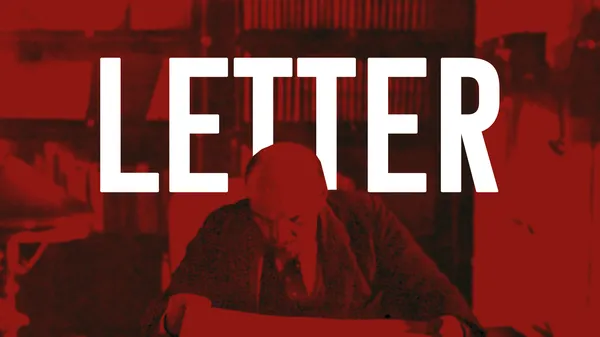Just over a week ago, Cosmonaut published a piece by a comrade Christian Noakes, in which the comrade attempted to critique what they believe to be a generalized, nostalgic use of socialist realism, specifically the visual art commonly associated with that term, by the U.S. Left. However, while I believe that Noakes is correct to charge our movement with lacking a dynamic aesthetic life of its own, I disagree that this is the result of a “deep nostalgia” for the formal qualities, content, or classic works of socialist realism, broadly construed.[1]
To begin, I’d like to point out that, besides stating it as an obvious fact, Noakes provides very little evidence to support the idea that the re-use of classic socialist realist visual art is regularly practiced by the large, amorphous milieu that is the current U.S. socialist Left. In fact, contrary to Noakes, I’ve found that of the two broad historical periods of Soviet art history, it is the avant-garde’s classic pieces that seem to have had the most staying power as widely re-used images. And importantly, it is not clear to me that this mobilization of the remains of the Soviet avant-garde has anything to do with “capitalist realist” nostalgia either.[2]
Of course, I’m sure that there are some who return to socialist realist art out of a sense of “nostalgia for the future.”[3] But, I do not believe that this is the primary cause driving the continued re-mobilization of Soviet visual art by the U.S. Left.
My speculative explanation for why Soviet visual art continues to be re-used is quite simple: there is a lot of it. The Soviet Union was a social formation of immense size and produced, through its cultural and intellectual institutions, a body of socialist-themed artistic products of a scale far beyond the capabilities of most other left-wing movements, parties, and institutions. The massive cultural archive left behind by the Soviet Union continues to find use in re-application specifically because of its sheer volume, as well as the way in which its historically state-backed prestige and subsequent international visibility has consequently led much of it to be relatively easy to access.
Generously read, however, the real thrust of comrade Noakes’ piece is that the contemporary U.S. socialist movement does not have a dynamic, independent aesthetic life of its own, a point on which I agree wholeheartedly. Unfortunately, Noakes' diagnosis of the problem as one of aesthetic nostalgia leads us away from its solution.
Rather than a symptom of nostalgia, the U.S. Left’s aesthetic deprivation has the same origin as its political impotence: a lack of centralized, programmatic, and independent organization within the context of the highly developed capitalist cultural infrastructure of the imperial core. Indeed, if we want our movement to have a dynamic aesthetic life, an art of our own, we must build an organizational infrastructure capable of supporting it. Until we have that infrastructure, our movement will continue to make use of the cultural archive of the Soviet past, not out of nostalgia, but out of necessity.
Solidarity,
Christopher Carp
Liked it? Take a second to support Cosmonaut on Patreon! At Cosmonaut Magazine we strive to create a culture of open debate and discussion. Please write to us at submissions@cosmonautmag.com if you have any criticism or commentary you would like to have published in our letters section.
- Christian Noakes, “Against the Undead Cult of Socialist Realism,” Cosmonaut Magazine, November 4, 2022, https://cosmonautmag.com/2022/11/against-the-undead-cult-of-socialist-realism/. ↩
- It is worth pointing out that Mark Fisher, who coined this term, had a complex understanding of the role of nostalgia in both his theory of culture broadly and his notion of capitalist realism specifically. In certain cases, such as in his understanding of hauntological music and its ability to recall a past in which the future existed as a utopian category, Fisher seemed willing to posit nostalgia as politico-aesthetically progressive. For instance, writing on the work of early-aughts ambient electronica musician Leyland Kirby, Fisher stated that his “music constitutes a refusal to give up on a desire for the future. This refusal gives the melancholia a political dimension, because it amounts to a failure to accommodate to the closed horizons of capitalist realism.” In other cases, however, such as in his outspoken distaste for the retro-production style of British-American DJ and record executive Mark Ronson, Fisher identified nostalgia as both vulgar and reactionary. In a certain implicit way, Fisher’s understanding of the dual-character of a nostalgic aesthetic is very Brechtian, i.e. it allows that the political character of both form and content are socio-historically contingent. But, importantly, the hauntological in Fisher’s sense would be identified by Brecht as exactly the opposite of progressive, given the aristotelian character of the escapist way it engages its audience. Noakes, however, fails to reconcile the contradiction between Fisherian and Brechtian aesthetics, despite implicitly presenting them as united theoretically. Indeed, what Noakes claims is driving the continued attraction to socialist realism by the U.S. Left would be hauntological and progressive for Fisher, while being aristotelian and reactionary for Brecht. See: Mark Fisher, Ghosts of My Life: Writings on Depression, Hauntology and Lost Futures (Winchester, UK: Zero Books, 2014), 21, 11. ↩
- “Nostalgia for the future” is the phrase that the Italian experimental composer and life-long member of the Italian Communist Party (PCI), Luigi Nono, used to describe his aesthetic disposition in a 1986 interview. Nono, who died in 1990, spent his final years watching the Italian communist movement disintegrate and this quote, which is representative of Nono’s melancholic desire for political renewal in the face of world communism’s defeat, prefigures Fisher’s particular articulation of hauntology. See: Luigi Nono, Nostalgia for the Future: Luigi Nono’s Selected Writings and Interviews, ed. Angela Ida De Benedictus and Veniero Rizzardi (Oakland, CA: University of California Press, 2018), 392. ↩
